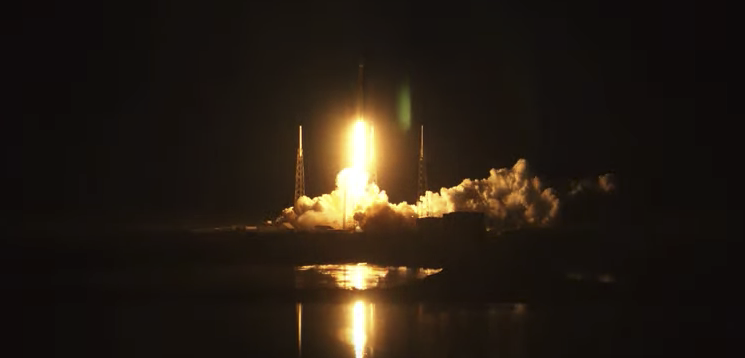Latest News

A SpaceX Falcon 9 rocket launches Starlink satellites on Dec. 2, 2021. Screenshot via SpaceX
SpaceX launched a batch of 48 Starlink satellites on Thursday evening, with two BlackSky satellites along for the ride. The Falcon 9 rocket took off from Space Launch Complex 40 at Cape Canaveral Space Force Station, Florida at 6:12 p.m. EST. Stage separation occurred two minutes and 45 seconds into the flight, and the first stage was successfully recovered about eight minutes and 50 seconds into the mission, marking its ninth recovery.
SpaceX used a circular orbital insertion for this mission due to BlackSky requirements. It requires two burns of the Merlin engines on the second stage. The BlackSky satellites deployed about an hour into the mission, with the Starlink satellites deploying about an hour and a half into the mission. BlackSky confirmed after the launch that its satellites were on orbit.
BlackSky announced Nov. 30 that it would add its two satellites to the launch, managed by Spaceflight. The company just launched two satellites last month with Rocket Lab, and expects to achieve a 12 small satellite constellation for geospatial intelligence monitoring by the end of 2021
SpaceX’s launches for its Starlink internet constellation slowed in pace in the second half of the year, with a gap from late May to mid-September as SpaceX waited until a laser-terminal equipped batch was ready, COO Gwynne Shotwell said at Space Symposium in August. Since then, SpaceX performed one Starlink launch on Nov. 13.
The launch comes after SpaceX founder Elon Musk sent an email to employees the day after Thanksgiving asking for an “all hands on deck” return to work over the holiday weekend to fix a “production crisis” with its Raptor engines, used in the Starship rocket in development. Musk said the company could face bankruptcy if Starship does not achieve a flight rate of once every two weeks next year.
Musk later agreed with an assessment on Twitter by space YouTuber Tim Dodd, known as Everyday Astronaut, that SpaceX is making large investment into Starlink 2.0, which relies on Starship for deployment. “Until Starship flies often, there’s a potential cash flow issue, and Raptor production is the biggest risk for bottle neck,” Dodd said.
Musk added: “If a severe global recession were to dry up capital availability/liquidity while SpaceX was losing billions on Starlink [and] Starship, then bankruptcy, while still unlikely, is not impossible.”
Stay connected and get ahead with the leading source of industry intel!
Subscribe Now